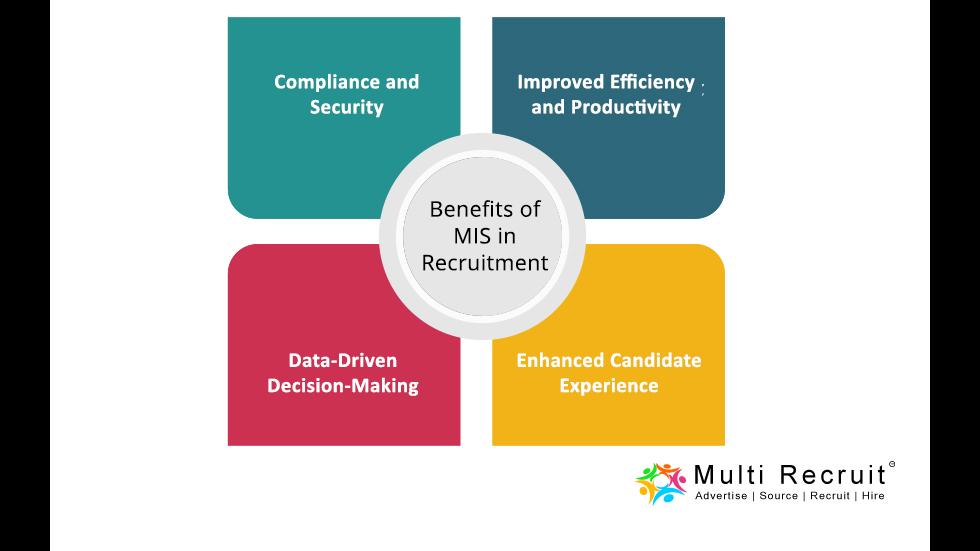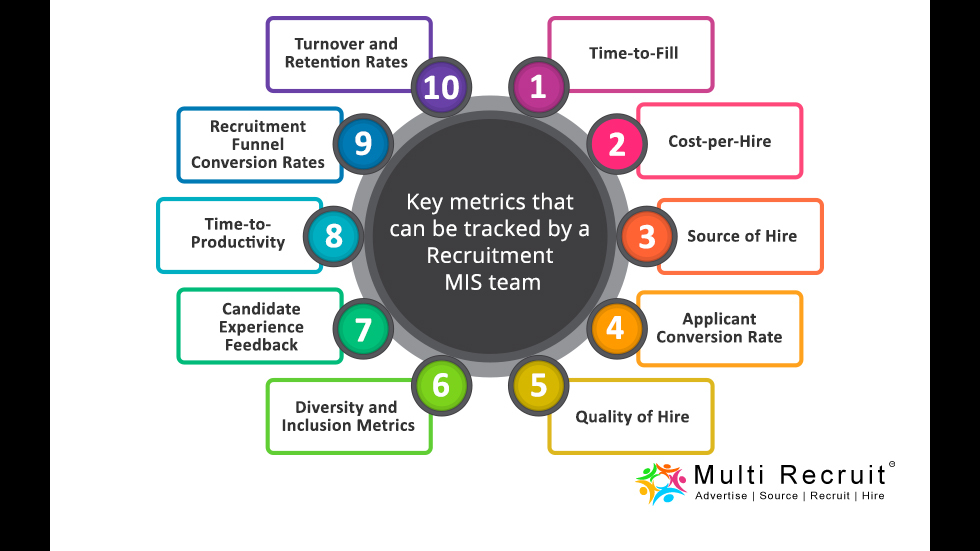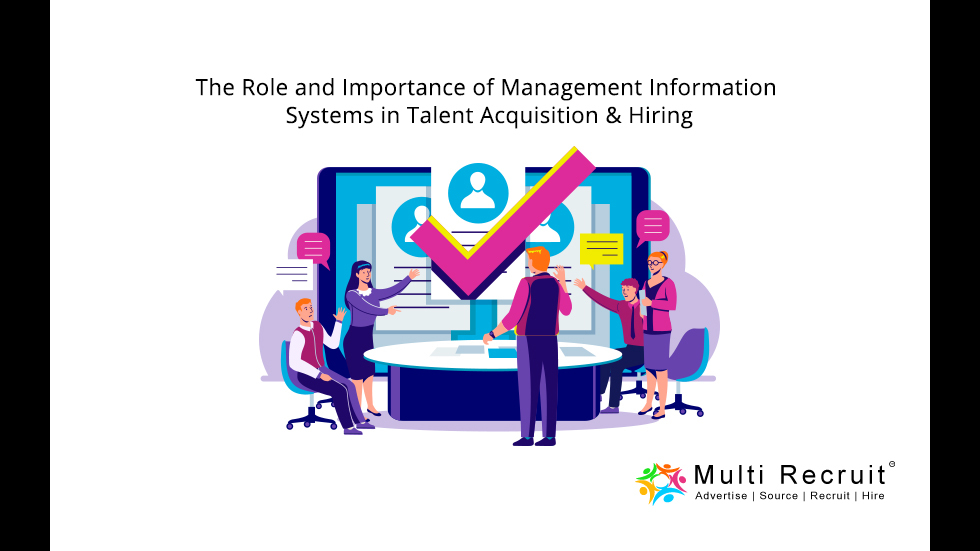In today’s competitive business landscape, organizations strive to attract and retain top talent to drive their success. However, the process of talent acquisition and hiring can be complex and challenging. This is where Management Information Systems (MIS) play a vital role.
A Management Information System (MIS) or Recruitment Management System (RMS) in recruitment refers to the integration of technology and data to manage and optimize the recruitment process within an organization. It serves as a centralized system that collects, organizes, and analyses recruitment-related information, enabling recruiters and hiring managers to make informed decisions and streamline their operations.
The primary purpose of a RMS or MIS is to enhance efficiency, improve candidate experience, and facilitate data-driven decision-making throughout the hiring process. It offers a range of features and functionalities that assist recruiters and hiring managers in effectively managing the end-to-end recruitment workflow. Here are some key aspects and capabilities of a typical Recruitment Management System:
- Job Posting and Candidate Sourcing: An RMS allows recruiters to create and manage job postings, post them on multiple job boards or career websites, and track candidate applications. It often includes features for candidate sourcing, such as integration with job aggregators and social media platforms, to expand the reach and visibility of job openings.
- Applicant Tracking and Workflow Management: The core functionality of an RMS is its ability to track and manage candidate applications. It provides tools for screening, filtering, and ranking applicants based on predefined criteria. It enables recruiters to collaborate, review, and rate candidates, ensuring a streamlined workflow and efficient candidate evaluation process.
- Candidate Relationship Management (CRM): Many RMS platforms incorporate CRM capabilities that allow recruiters to build and maintain relationships with candidates. These features include email automation, candidate engagement tracking, and talent pooling to facilitate ongoing communication and engagement with prospective candidates.
- Interview Scheduling and Collaboration: An RMS often includes features for scheduling and managing interview appointments. Recruiters can send interview invitations, coordinate schedules with hiring managers and candidates, and track interview feedback and outcomes. Collaboration features enable seamless communication among stakeholders involved in the hiring process.
- Reporting and Analytics: Recruitment Management Systems provide reporting and analytics tools to track and measure recruitment performance metrics. These include metrics like time-to-fill, cost-per-hire, source of hire, and applicant conversion rates. Analytics capabilities enable data-driven decision-making by providing insights into recruitment trends, candidate pipeline, and hiring effectiveness.
- Onboarding and Integration: Some RMS platforms offer integration with onboarding systems or include onboarding features themselves. This ensures a smooth transition for new hires by facilitating the necessary paperwork, induction training, and initial engagement within the organization.
By leveraging a Recruitment Management System, organizations can optimize their recruitment processes, streamline candidate selection, enhance collaboration, and improve overall recruitment outcomes. It enables recruiters and hiring managers to focus on strategic aspects of talent acquisition while providing tools and automation to manage administrative tasks efficiently.
Let’s explore the significance of MIS/ RMS in talent acquisition and hiring:
- Efficient Applicant Tracking: One of the primary functions of MIS in talent acquisition is an efficient applicant tracking system. It enables organizations to manage and monitor the entire hiring process from job posting to candidate selection.
According to research conducted by Aberdeen, companies with automated applicant tracking systems experienced a 15% reduction in time-to-fill positions compared to those without such systems. MIS allows recruiters to track applications, screen candidates, and schedule interviews more efficiently, ultimately improving the overall hiring process.
2. Data-Driven Decision Making: MIS provides valuable insights and data analytics that empower organizations to make data-driven decisions in talent acquisition and hiring. By analyzing historical data, such as candidate profiles, hiring sources, and recruitment costs, organizations can identify trends, patterns, and areas for improvement.
For example, MIS can help identify the most effective sourcing channels, optimize recruitment budgets, and assess the success of various hiring strategies. According to a Deloitte study, organizations that use data-driven talent acquisition strategies are twice as likely to improve their recruiting efforts and reduce costs.
3. Streamlined Communication and Collaboration: Effective communication and collaboration are crucial for successful talent acquisition and hiring. MIS facilitates streamlined communication by providing a centralized platform for recruiters, hiring managers, and candidates to interact and share information. It ensures that all stakeholders have access to real-time updates on candidate status, interview schedules, and feedback. Furthermore, MIS enables seamless collaboration between HR teams, interviewers, and hiring managers, ensuring transparency and reducing miscommunication.
4. Enhanced Candidate Experience: A positive candidate experience is essential for attracting and retaining top talent. MIS plays a significant role in enhancing the candidate experience throughout the hiring process. It allows organizations to automate personalized communication, provide timely updates, and create a user-friendly application process.
According to a study by IBM, 60% of job seekers have abandoned an online application due to its length or complexity. MIS helps streamline and simplify the application process, ensuring a smoother experience for candidates and increasing the likelihood of attracting high-quality talent.
5. Performance Measurement and Continuous Improvement: MIS enables organizations to measure the performance of their talent acquisition and hiring processes. By tracking key performance indicators (KPIs) such as time-to-fill, cost-per-hire, and quality of hire, organizations can assess the effectiveness of their strategies and identify areas for improvement. For instance, if the time-to-fill metric is consistently high, organizations can analyze the process, identify bottlenecks, and take corrective actions to optimize efficiency. Continuous improvement based on data insights allows organizations to refine their talent acquisition strategies and stay competitive in the market.
Benefits of MIS in Recruitment:

- Improved Efficiency and Productivity: An MIS in recruitment streamlines various recruitment tasks, automates processes, and reduces administrative burdens. This efficiency allows recruiters to focus on strategic activities such as candidate assessment and engagement, leading to increased productivity and improved overall recruitment outcomes.
- Enhanced Candidate Experience: A positive candidate experience is crucial in attracting and retaining top talent. An MIS in recruitment helps create a seamless and personalized experience for candidates. It enables timely and automated communication, provides self-service portals for application tracking, and ensures transparency in the recruitment process. By enhancing the candidate experience, organizations can build a strong employer brand and attract high-quality talent.
- Data-Driven Decision-Making: Data is a valuable asset in recruitment. An MIS provides recruiters and hiring managers with access to comprehensive data analytics and reporting, enabling them to make data-driven decisions. By analyzing recruitment metrics and trends, organizations can identify areas of improvement, optimize sourcing channels, and refine their recruitment strategies for better outcomes.
- Compliance and Security: Recruitment processes involve handling sensitive candidate data. An MIS in recruitment ensures compliance with data protection regulations by providing secure storage and access controls. It allows organizations to maintain confidentiality, protect candidate information, and adhere to legal and ethical standards.
key metrics that can be tracked by a Recruitment MIS team:

Tracking metrics is crucial for the success of any Recruitment Management Information System (MIS) team. Here are some key metrics that can be tracked by a Recruitment MIS team:
- Time-to-Fill: This metric measures the time taken from the initiation of the recruitment process to the final selection and hiring of a candidate. Tracking time-to-fill helps identify bottlenecks in the hiring process and allows the team to optimize their recruitment strategies and reduce time-to-hire.
- Cost-per-Hire: Cost-per-hire calculates the expenses incurred during the recruitment process, including advertising costs, agency fees, technology platforms, and other recruitment-related expenditures. This metric helps evaluate the cost-effectiveness of different recruitment channels and strategies and assists in budget planning.
- Source of Hire: Tracking the source of hire provides insights into which channels or platforms are most effective in attracting qualified candidates. It helps allocate resources and optimize recruitment efforts by identifying the most successful sourcing channels, such as job boards, employee referrals, social media platforms, or career fairs.
- Applicant Conversion Rate: This metric measures the percentage of applicants who successfully progress through each stage of the recruitment process, from initial application to job offer acceptance. Tracking applicant conversion rate helps identify areas where candidates drop off during the process, allowing the team to enhance candidate experience and streamline the selection process.
- Quality of Hire: Quality of hire evaluates the performance and long-term success of candidates hired. It measures factors such as job performance, retention rates, and contributions to the organization. By assessing the quality of hire, the team can analyze the effectiveness of their selection process and identify areas for improvement in candidate screening and assessment.
- Diversity and Inclusion Metrics: Tracking diversity and inclusion metrics, such as the percentage of candidates from underrepresented groups or gender diversity, helps monitor progress in creating a diverse and inclusive workforce. It enables the team to assess the effectiveness of diversity initiatives and adjust recruitment strategies to promote inclusivity.
- Candidate Experience Feedback: Collecting feedback from candidates about their experience throughout the recruitment process is invaluable. Metrics like candidate satisfaction surveys or Net Promoter Score (NPS) provide insights into the overall experience, identify pain points, and highlight areas for improvement to enhance the candidate journey.
- Time-to-Productivity: Time-to-productivity measures the time it takes for a new hire to become fully productive in their role. Tracking this metric helps evaluate the effectiveness of onboarding and training programs and identifies opportunities to accelerate the integration of new hires into the organization.
- Recruitment Funnel Conversion Rates: Monitoring the conversion rates at each stage of the recruitment funnel, from initial application to final selection, provides insights into the efficiency of the process. It helps identify areas of improvement and streamline the workflow to increase the number of qualified candidates progressing through each stage.
- Turnover and Retention Rates: Tracking turnover and retention rates helps evaluate the effectiveness of the recruitment process and the overall employee experience. High turnover rates may indicate issues in talent acquisition or onboarding processes, whereas high retention rates reflect successful hiring and employee engagement strategies.
By tracking these metrics, a Recruitment MIS team can gain valuable insights into their recruitment processes, make data-driven decisions, and continuously improve their strategies to attract, select, and retain top talent.
In the dynamic and competitive business environment, organizations must leverage technology and data to attract and hire the best talent. Management Information Systems (MIS) provide the necessary tools and insights to optimize talent acquisition and hiring processes. From efficient applicant tracking to data-driven decision making, streamlined communication, enhanced candidate experience, and performance measurement, MIS plays a crucial role in every aspect of talent acquisition. By embracing and leveraging MIS, organizations can gain a competitive edge in attracting, selecting, and retaining top talent, driving their success in the long run.

